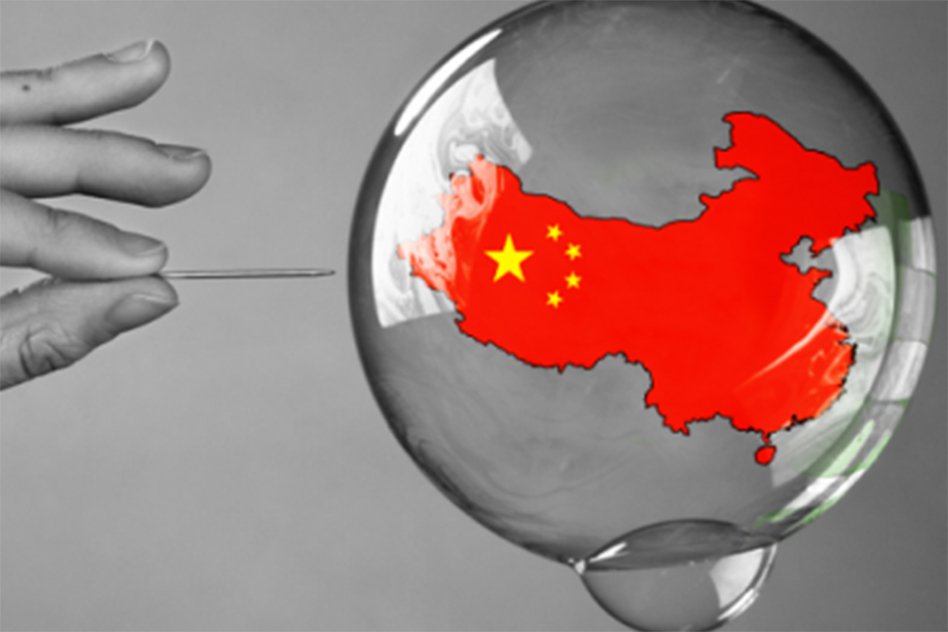Image Source: marxist
“From South Korea to Indonesia, exports are falling and economic growth is sputtering. Currencies have weakened … Meanwhile, the debts of companies and households are rising. Above all Asia’s locomotive, China, is losing power. The question is how much worse things can get—and whether official assurances of resilience are to be believed.”
– The Economist, 3 October 2015.
On 24 August 2015, after struggling for three weeks, the Shanghai Stock Exchange fell by 8.48%. Within hours, global markets fell around the world. The Dow Jones Industrial Average – the US stock market index – fell by 1000 points, the largest in history. Everybody feared economic collapse. Americans and Europeans began hoarding money, pundits on television were discussing the situation in grim overtones, and world leaders were busy dealing with the delicate macroeconomics of the situation. The crash has been attributed to – among other factors – the devaluation of the Yuan to make exports cheaper, a general global stagnation since 2008, and a slowdown of the housing sector.
The crash followed a year of Chinese economic doldrums. China grew at an average annual rate of 10% for a long time, but this year it has fallen short of its goals during all 3 quarters. In the 3rd quarter, China’s economy grew by 6.9%. At this point it is crucial for us to understand 3 features that have defined the analysis of China’s economy in the past:
• There is speculation over whether Beijing is manipulating its numbers for political reasons.
• There has always been criticism that nominal GDP growth is a poor gauge for a country like China which still grapples with poverty and inequality.
• There are widespread environment concerns associated with China’s bullish growth, with China faring poorly on environmental indices and not being an active party in environmental treaties.
After years of economic paralysis, in 1979 China began to slowly move away from its Maoist model of central planning to embrace a more globalized, free market-friendly economic model. The reforms were revolutionary in nature and turned the impoverished, heavily populated country to the world’s fastest growing economy in less than 3 decades. Over the years, China’s economy has bested the expectations of economists and enabled it to emerge as a key player on the international stage.
However, China’s economy, even after the radical reforms of 1979, remains mainly State-owned. As such, China’s economy is intimately linked with its political structure. An example of this is 1989 when continuous inflation and corruption transpired in the Tiananmen Square Protests which killed about 2000 people. The existence of the single-party communist State (noted for its uniqueness of combining the political surety of autocracies and the free market ideology of democracies) relies on delivering to the Chinese people active growth and market opportunities to avoid any popular unrest.
To spur the economy, China has cut interest rates and may fuel certain parts of the economy with extra money. But the country’s manufacturing and services sector remain in decline, and global analysts report that the economy is unlikely to pick up any time soon. And due to the increasingly globalized nature of the world economy, what affects China will definitely affect the world. The 2015 crash lost billions of dollars for the global market and forced the US Federal Reserve to not raise interest rates on September. What happens in China – or any country for that matter – will affect every other country. The global economy has become interlinked in infinite ways. And while this has its benefits, it also makes the world economy much more delicate and prone to damage.
India, however, has managed to emerge from a short period of economic downturn to a 7.5% growth rate today. With India’s leaders aiming for a 10% growth rate and what with India becoming the most preferred FDI destination in the world, India is the one Asian nation whose growth trajectory is likely to rise up. Given China’s uncertainty, Japan’s downturn, Russia’s diplomatic troubles, and Europe’s stagnation, India must seize this historic opportunity to grow its economy, add jobs, invest in its manufacturing sector and use its abundant human resources to reach double-digit economic growth. Only then can it rescue millions from poverty, expand healthcare and social benefits, modernize its infrastructure, increase per-capita GDP and become a superpower. India needs to expand reforms and set immediate goals so that it can replace China as the global economic engine.











